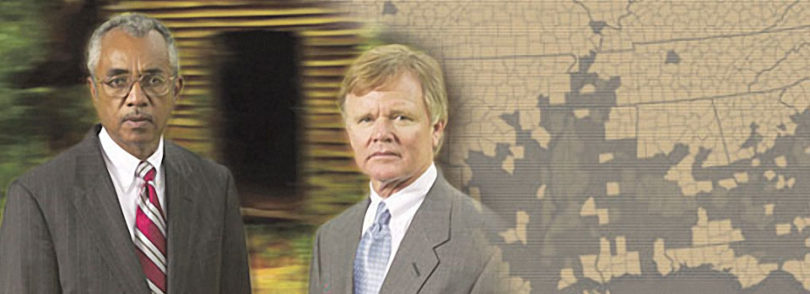More than one-third of the 242 counties in the Southeastern persistent poverty region are located in Georgia. Spanning from Athens-Clarke county to Miller to Troup, these counties are defined by statistics that boggle the mind, especially against the backdrop of Georgia’s economic strength over the past decade:
– 20.9 percent of the total population and 27.4 percent of children live below poverty level (defined as an income of $17,650 for a family of four);
– 29.5 percent of residents age 25 and above do not have a high school diploma;
– the unemployment rate is 7.1 percent, 40 percent higher than other Georgia counties;
– the rate of low birth-weight babies is 25 percent higher than the national rate.
“The data confirmed what I already knew about the region, but it was still startling to see the unevenness of growth and development,” said Art Dunning, vice president for public service and outreach at UGA. “This is an economic issue, pure and simple.”
“What was a complete surprise to me was the disparity between rural Georgia and metropolitan Georgia,” said Jim Ledbetter, director of the Carl Vinson Institute of Government at UGA, which conducted the study. “These problems have persisted for decades. We need both a body of knowledge and a set of programs built over the years to address these issues.”
U.S. Senator Zell Miller secured $250,000 in federal funding to help start the data collection on poverty in Georgia and other Southern states. Macon businessman Benjy Griffith matched that with a $250,000 gift to the UGA Foundation in support of the study. The year-long study, completed in December 2002, paints a stark picture of a region not only separated from the economic boom that metro Atlanta has enjoyed, but of a region which also threatens to draw the rest of Georgia into the cycle of poverty.
“I’ve seen this problem up close,” said Griffith, whose timberland and real estate business stretches from Georgia to Texas. “I believe UGA research can help develop a plan to address poverty in this state. Somebody has to do something.”
“We need a population which can fully participate in the 21st century and a community infrastructure which supports that population,” said Ledbetter, looking ahead to the next phase of the study. “Then we can craft a set of policies and programs to address these issues.”
“This is not an issue of historical or social justice,” Dunning said. “Those discussions don’t get us anywhere. We need to take a detailed look at where we are, and then work together to improve Georgia.”








